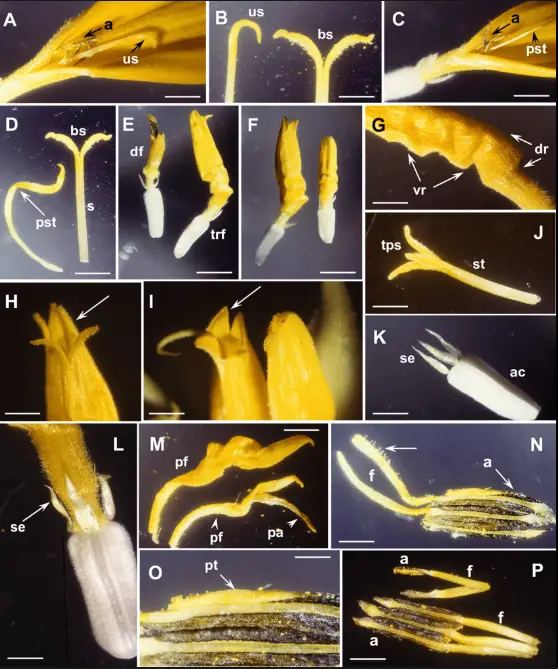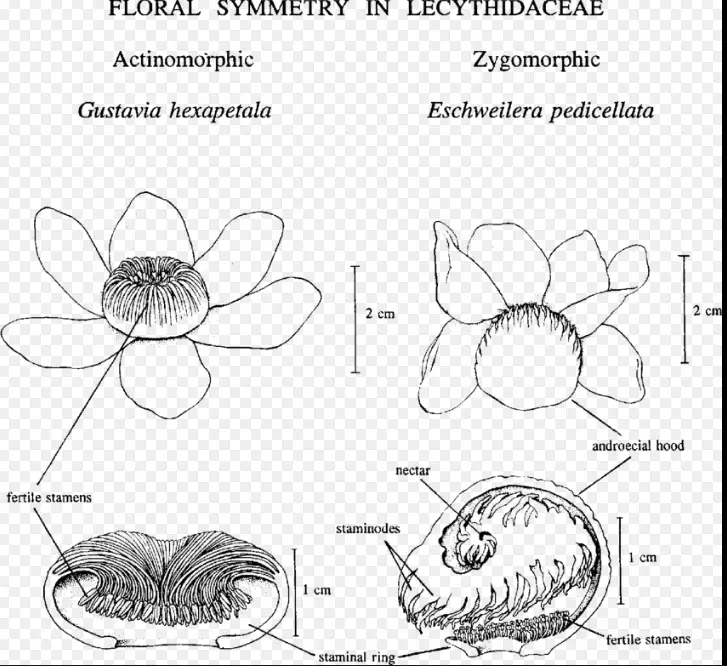Floral symmetry, a fascinating aspect of botanical science, categorizes flowers based on their structural attributes. This classification plays a crucial role in understanding plant evolution, reproduction, and ecological interactions. By examining the symmetry of a flower, botanists can infer significant information about the species’ evolutionary adaptations and pollination mechanisms.
Actinomorphic and zygomorphic flowers represent the two primary types of floral symmetry. Actinomorphic flowers, often referred to as radially symmetrical, can be divided into multiple identical parts along any radial plane. In contrast, zygomorphic flowers, or bilaterally symmetrical flowers, can only be divided into mirrored halves along a single specific plane. This distinction not only influences the visual appeal and biological function of these flowers but also their interaction with pollinators.
The study of these symmetries reveals more than aesthetic differences; it encompasses the evolutionary strategies plants use to attract pollinators and thrive in diverse environments. Understanding these mechanisms provides insights into the broader ecological dynamics and evolutionary history of flowering plants.

Flower Symmetry Basics
Definition of Symmetry
In botany, symmetry refers to the balance and proportion of plant structures, especially flowers, as they distribute around a central point or axis. Symmetrical flowers exhibit a consistency in size, shape, and relative position of parts, making symmetry a vital tool for classification and evolutionary study.
Types of Flower Symmetry
Flower symmetry typically falls into two main categories: actinomorphic and zygomorphic. Actinomorphic flowers are those which can be divided into two or more identical sectors from multiple planes passing through the center, presenting a more uniform appearance. Zygomorphic flowers, however, display symmetry only through a single plane, which generally splits the flower into two mirrored halves. Each type of symmetry plays a role in the flower’s interaction with its pollinators and environment.
Actinomorphic Flowers
Characteristics
Actinomorphic flowers are often described as radially symmetrical. This means they maintain a consistent pattern no matter how they are viewed or divided, similar to the spokes of a wheel. Such flowers are typically accessible to a variety of pollinators, as their uniform structure allows for easy access from any direction.
Common Examples
Examples of actinomorphic flowers include the daisy, sunflower, and lily. These flowers are recognizable for their radial patterns and are often appreciated for their aesthetic simplicity and natural appeal.
Ecological Significance
The ecological importance of actinomorphic flowers lies in their generalist pollination strategy. Their structure supports pollination by a wide range of insects, birds, and even wind, facilitating extensive gene flow across populations. This adaptability can often lead to greater resilience in changing environments.
Zygomorphic Flowers
Characteristics
Zygomorphic flowers, also known as bilaterally symmetrical flowers, exhibit symmetry only along one plane. This design often results in a complex structure tailored to specific types of pollinators, which must approach the flower from a particular direction to access its nectar and pollen.
Common Examples
Well-known zygomorphic flowers include the orchid, snapdragon, and pea flower. These species often display intricate designs intended to attract and facilitate efficient pollination by specific wildlife, such as bees and butterflies.
Ecological Significance
The specialization of zygomorphic flowers often leads to specialized pollination mechanisms. This can result in a tight mutualistic relationship between the flower and its pollinators, which can enhance the efficiency of pollen transfer but also increases the plant’s vulnerability to the loss of these pollinators.

Comparative Analysis
Morphological Differences
The morphological differences between actinomorphic and zygomorphic flowers are striking and significantly influence their ecological roles. Actinomorphic flowers often have multiple symmetrical petals that radiate outward, resembling a star. This shape allows them to be accessible from all sides, making them attractive to a variety of pollinators. In contrast, zygomorphic flowers have petals that are often unequal in size and shape, creating a complex structure that typically caters to specific pollinators.
Pollination Strategies
The pollination strategies of these two flower types are deeply influenced by their morphologies. Actinomorphic flowers are more generalized; they do not prefer any specific pollinator, which increases their chances of being pollinated by any visitor. Zygomorphic flowers, however, have evolved to develop a more exclusive relationship with specific pollinators, such as certain species of bees or birds, which can manipulate the specialized flower structure to access nectar, thus ensuring efficient pollen transfer.
Adaptive Significance
The adaptive significance of each flower type reflects their evolutionary responses to environmental pressures. Actinomorphic flowers thrive in environments where pollinator visits are unpredictable, thus benefiting from a design that welcomes diverse pollinators. Zygomorphic flowers, by focusing on specific pollinators, maximize the efficiency of pollination but at the risk of dependence on a limited range of pollinator species.
Evolutionary Perspectives
Evolution of Flower Symmetry
The evolution of flower symmetry is a fascinating aspect of plant evolution, revealing how different species have adapted to their ecological niches. Initially, most flowers were likely actinomorphic, offering broad accessibility. Over time, as relationships with pollinators developed and environments changed, more complex zygomorphic flowers evolved to maximize reproductive success with fewer, more reliable pollinator species.
Phylogenetic Implications
Understanding the phylogenetic implications of flower symmetry helps trace the evolutionary history of plant families. Phylogenetic analysis often shows that zygomorphic symmetry is a derived characteristic, which suggests a significant evolutionary shift aimed at optimizing pollination strategies within specific ecological contexts.
Impact on Horticulture
Aesthetic Value
The aesthetic value of flowers significantly influences horticultural practices and consumer preferences. Actinomorphic flowers are often seen as more ‘traditional’ and are commonly used in decorative settings for their uniform and pleasing appearance. Zygomorphic flowers offer unique visual appeal and exotic looks, making them popular in modern landscape designs and as specialty plants in gardens.
Cultivation Varieties
In the realm of cultivation, both types of flowers offer a range of varieties tailored to different gardening needs:
- Actinomorphic varieties are often hardier and more versatile, thriving in a variety of conditions and tending to be easier to grow.
- Zygomorphic varieties are frequently cultivated for their unique beauty and specificity, although they may require more care and specific conditions to flourish.
Frequently Asked Questions
What is Floral Symmetry?
Floral symmetry refers to the arrangement of the parts of a flower in relation to an axis; this arrangement determines how a flower can be divided into equal parts. Most flowers fall into two main categories: actinomorphic (radial symmetry) and zygomorphic (bilateral symmetry).
Why is Flower Symmetry Important?
Flower symmetry is crucial for understanding pollination strategies. It influences which pollinators are attracted to the flower based on accessibility and visual cues. This, in turn, affects the plant’s reproduction and survival strategies.
How Do Actinomorphic and Zygomorphic Flowers Differ?
Actinomorphic flowers are symmetrical around multiple planes passing through the central axis, meaning they appear the same from multiple angles. Zygomorphic flowers are only symmetrical along one plane, which usually means they have a distinct top and bottom.
Can a Plant Have Both Types of Flowers?
It is rare but possible for a plant species to exhibit both actinomorphic and zygomorphic flowers, depending on environmental factors and genetic variations. This versatility can benefit the plant by attracting a broader range of pollinators.
Conclusion
The distinction between actinomorphic and zygomorphic flowers is a fundamental aspect of botany that offers deeper insights into the evolutionary biology of plants. By examining these forms of symmetry, researchers can better understand plant-pollinator relationships and the evolutionary pressures that shape them.
This knowledge not only enriches our understanding of the natural world but also aids in the conservation and cultivation of floral species. It highlights the intricate balance between plant morphology and ecological adaptation, emphasizing the complex interdependencies in nature.

